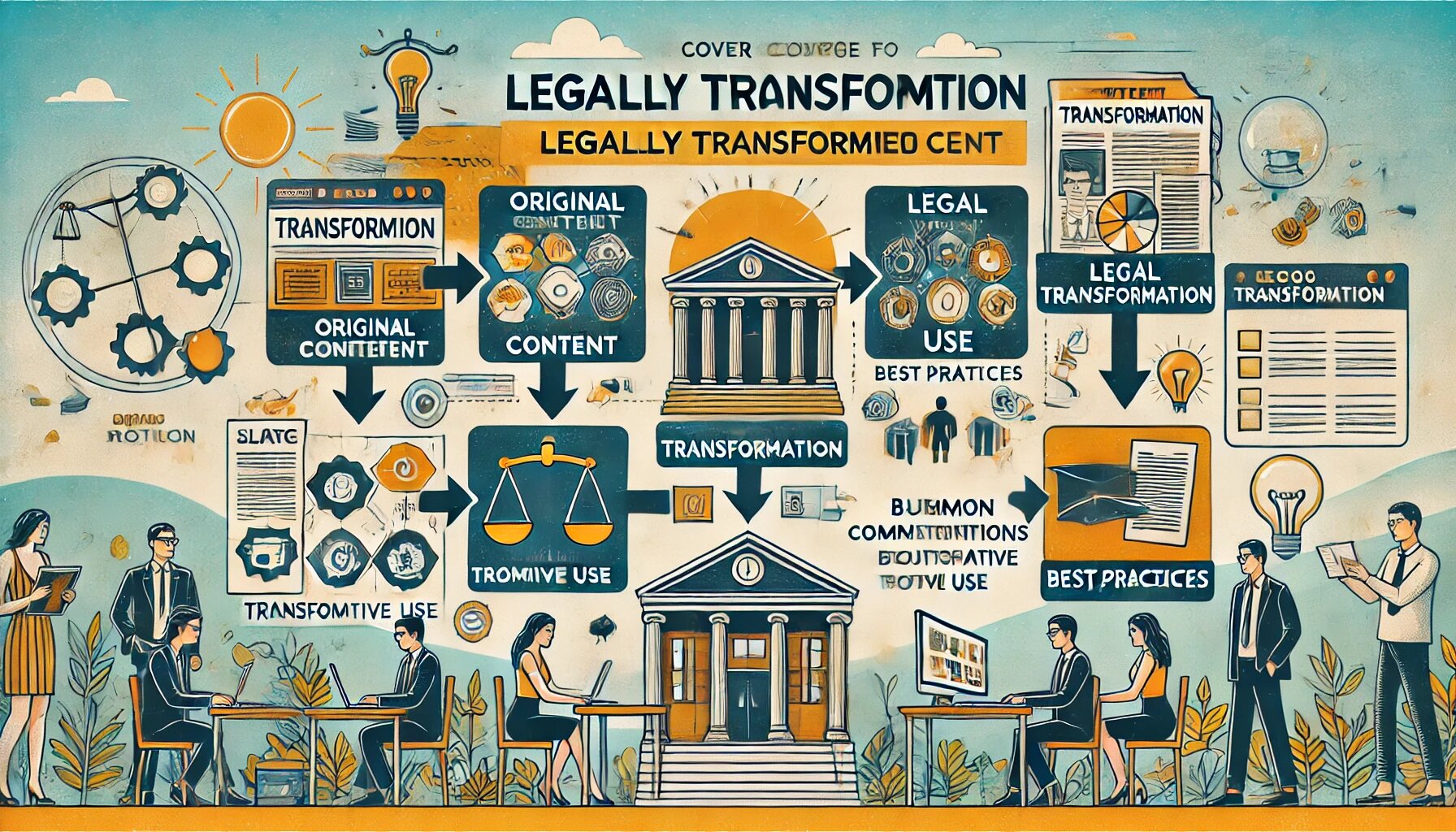Creators running small YouTube channels, the ability to legally use transforming content is a powerful tool for standing out in a crowded digital space. Transformative works, which add new expression, meaning, or message to original content, are often protected under the fair use doctrine. This protection allows creators to explore their creativity while legally using existing content as a foundation. However, understanding the legal boundaries of transformative use is crucial to avoid copyright issues.

At Xtrusion Solution, we’re dedicated to helping content creators navigate the complexities of transformative use and fair use. Our XS Managers provide the guidance needed to create content that is both innovative and legally compliant. In this blog, we’ll explore what transformative works are, why legal transformation matters, and how to create transformative content that meets legal standards.
What is a Transforming Content?
A transformative work is a piece of content that significantly alters the original work by adding new expression, meaning, or message. This transformation is key to distinguishing the work from a mere copy or derivative. For example, reaction videos, where creators add commentary or critique to the original content, often qualify as transformative. Similarly, parody videos that mock or satirize the original work by using its elements in a humorous or critical way can also be considered transformative.
Transformative works are generally protected under the fair use doctrine, which allows for the limited use of copyrighted material without permission, provided that the new work is sufficiently different from the original. This protection is particularly important for small channels, as it enables them to engage with popular content and trends without infringing on the rights of the original creators.

Why Legal Transformation Matters
Making transforming content is not just about creativity; it’s also about legal protection. If a work is not sufficiently transformative, it may be considered a derivative work, which is not covered by fair use and could result in copyright claims or strikes. For small channels, this can have serious consequences, including video takedowns, strikes on the channel, and even legal action.

Legal transformation matters because it allows creators to leverage existing content while staying within the bounds of the law. By ensuring that your work is transformative, you can reduce the risk of copyright infringement and protect your channel’s reputation and growth.
How to Create Transforming Content
Creating transforming content involves more than just editing or reusing existing material. To qualify as transformative, your work must add significant new expression, meaning, or message to the original. Here’s how to do it!
- Add New Meaning or Message: Transformative works often reinterpret or repurpose the original content to convey a new meaning or message. For example, you might take a popular movie scene and reinterpret it to discuss a broader social issue or to provide educational commentary.
- Incorporate Commentary or Criticism: Adding commentary or critique is a powerful way to transform content. This could involve analyzing the original work, offering a new perspective, or highlighting its strengths and weaknesses. For example, a film review that critiques a movie while showing clips from it would be considered transformative.
- Use Parody or Satire: Parody and satire are forms of transformative content that mock or ridicule the original work. A parody music video that humorously imitates the original song while adding new lyrics and context is an example of how satire can transform content.
By following these steps, you can create content that is not only engaging and original but also legally protected.
Common Misconceptions About Transformative Use
- Simply editing or remixing content does not automatically make it transformative. The work must add significant new expression or meaning to qualify.
- While remixing or adapting content can be transformative, not all adaptations meet the legal criteria. The key is whether the new work substantially differs from the original in terms of its purpose and message.
- Just because a work is transformative doesn’t mean it automatically qualifies for fair use. Courts consider multiple factors, including the purpose of the use, the nature of the original work, the amount of content used, and the effect on the market for the original.
Understanding these nuances is crucial for creating transformative content that is legally compliant.
Best Practices for Legally Transforming Content
To ensure your transformative works are legally protected, consider the following best practices.
- Keep records of how you transformed the original content, including notes on the new meaning or message you added. This documentation can help defend your work if challenged.
- Even if your work is transformative, it’s good practice to credit the original creator. This not only builds goodwill but also helps avoid potential disputes.
- When you’re unsure whether your content qualifies as transformative, consult with legal professionals or use resources provided by Xtrusion Solution. This can help you navigate the legal complexities of fair use and transformative works.
Conclusion

Creating transformative content is a powerful way for small YouTube channels to engage with popular trends and produce innovative content. By understanding the principles of transformative use and following best practices, you can create content that is both creative and legally protected. Xtrusion Solution is here to support you in this journey, providing the resources and expertise you need to navigate the complexities of transformative use and protect your content effectively.


